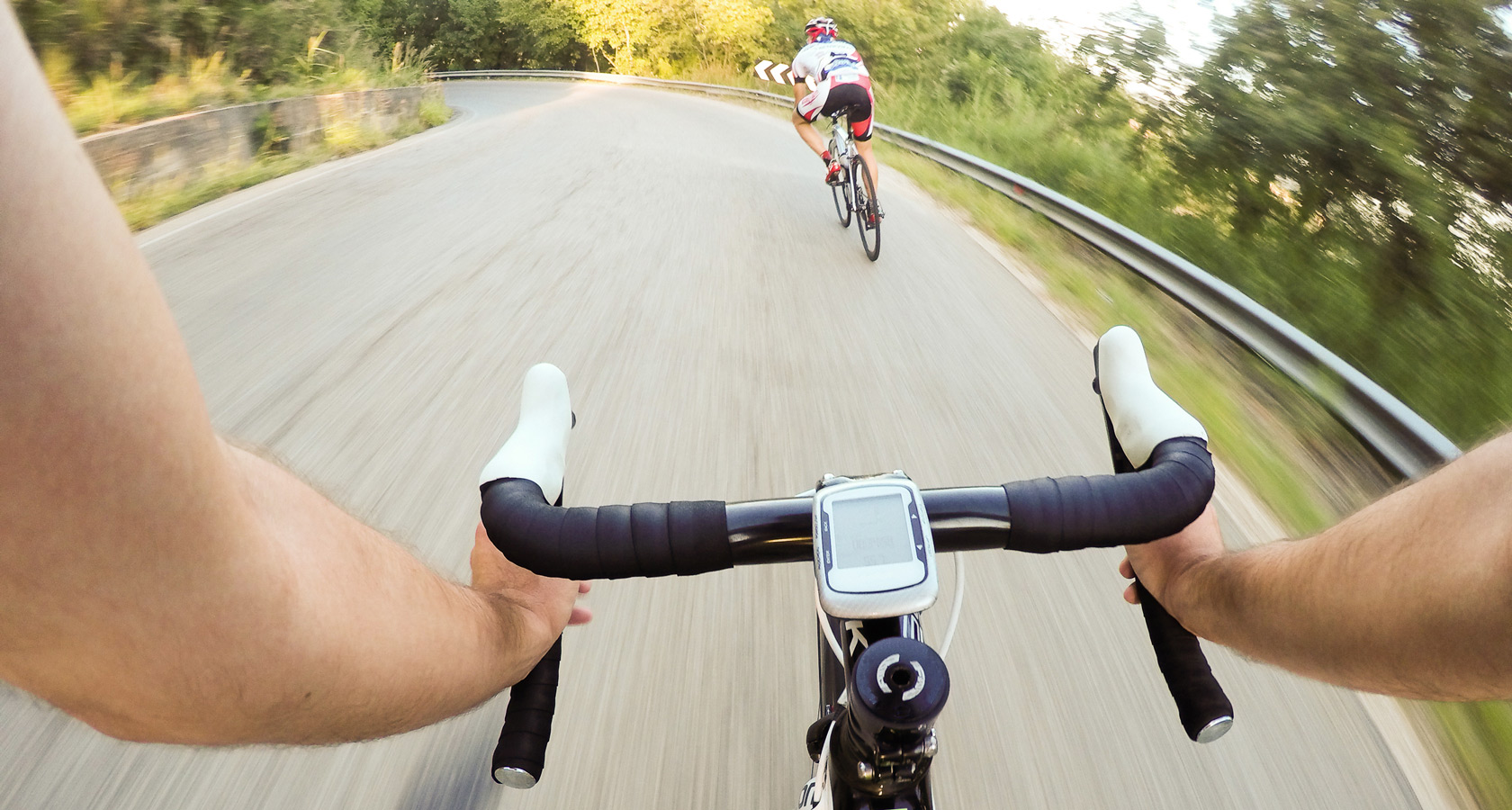Technique for the Intermediate Cyclist
In triathlon, the largest amount of most athlete’s time and energy is expended on the bike. Training with an emphasis on efficiency and skill can pay off with massive time savings over the course of the race. Saving energy during the cycling leg will allow you to swim faster, knowing you will have an advantage over others on the bike. With less fatigue on the bike, your run will be faster as well, resulting in your best overall race time. Train these skills during your cycling workout for your best triathlon performance.
Descending
Think of descending as free speed. Gravity is propelling the bike, so let it work in your favor. Get as aerodynamic as possible, especially at higher speeds where catching more wind will slow you down. Stay low and tight to your bike, without tensing up. Practice relaxing while still being able to respond to wind gusts and road hazards. Use this as a mini-break to get behind your seat and stretch out your legs and back, keeping your weight back for safety. Look way ahead, anticipating corners and traffic. Soft-pedal as the road starts to turn back up to ensure you are in the right gear and keep your legs moving, getting them primed for the increased effort to come. Carrying your momentum off a downhill is a great way to conserve energy even if the hills are not steep.
Braking
Learn to feather both the front and rear brakes gently, not overreacting to cause loss of traction or steering. Brake before you need to, but do not “drag” the brakes, especially on descents — heating up the rims or wearing down the pads. Downshift while you are braking so you will be in the right gear when you need to put power back on the pedals, being mindful of the terrain ahead. Heavy use of the front brake will pose obvious problems but can be used effectively with proper technique. Practice shifting your weight back while learning the limits of your brakes outside of competition. Be mindful of others around you while racing, realizing that the smoother you can decelerate, the less chance you have of getting rear-ended.
Climbing
Fitness and training for climbing well are paramount. We all strive for a high power to weight ratio in order to climb strong. While working on your fitness, use these strategies to help you climb well. Look beyond the summit and push strong over the top of the hill, not just up the hill. You will carry more momentum over the top and get on the backside descent quicker. Pedal smooth, fast circles while climbing to help distribute the work over more of your lower extremity muscles. Mashing on the pedals will wear you out, making for a slower run. Stay on top of an easier gear to keep your legs fresh. Shift early so you don’t get bogged down. If standing on a steeper climb, be sure to work on your balance while pulling up on the pedals to limit side to side path deviation, which would effectively make your ride longer than your competitors.
Cornering
Practice leaning your bike into corners, not your body. Counterbalance with your body weight, pressing down on the outside pedal while extending your inside arm. This will allow you to hold insane traction while looking super cool. Be mindful of road conditions, always on the lookout for water, gravel and the stray bottle or fellow competitor. Looking ahead and seeing past the corner will allow you to carry maximum speed out of the corner as well, requiring less energy to get your bike back up to speed. Be sure to practice braking before the corner for best tire grip and work on getting faster in tighter corners as your skill improves.
Cadence
Faster cadence will not only help you on the climbs but on the flats too. Work on maintaining your highest possible cadence without bouncing on the saddle during training with “spin-up” workouts. Do 10x30 second spin ups during your next training ride by starting in a moderately difficult gear at about 60 RPM, building to your maximum cadence and holding it without bouncing for a total of 30 seconds. Rest a couple of minutes between each effort. With training your neuromuscular and cardiovascular systems will adapt, allowing you to spin faster with less effort. This will translate into less muscle fatigue for a faster overall race.
Aerodynamic Position
Train to stay low for as long as possible. Catching the wind is one of the most frustrating and tiresome wastes of effort. Allowing your body to adapt to making power while staying in the aerodynamic position will take some time, so be kind at first, taking short stretching breaks while traveling at slower speeds. If you are maintaining more than 12-15 mph, be sure to stay low and tight to the bike as the effects of aerodynamics are amplified at faster speeds. Get comfortable eating and drinking in this position during your training rides as well, so you can properly fuel your whole race.
Time Trial Efforts
Know your course and try to simulate longer, focused efforts at your race pace during you're training rides. Is your bike course hilly and twisty or flat and straight? Train specifically for the conditions of your race for your best performance. If possible, get out on the course plenty of time in advance so you know what to expect and where your effort should be focused during training.


